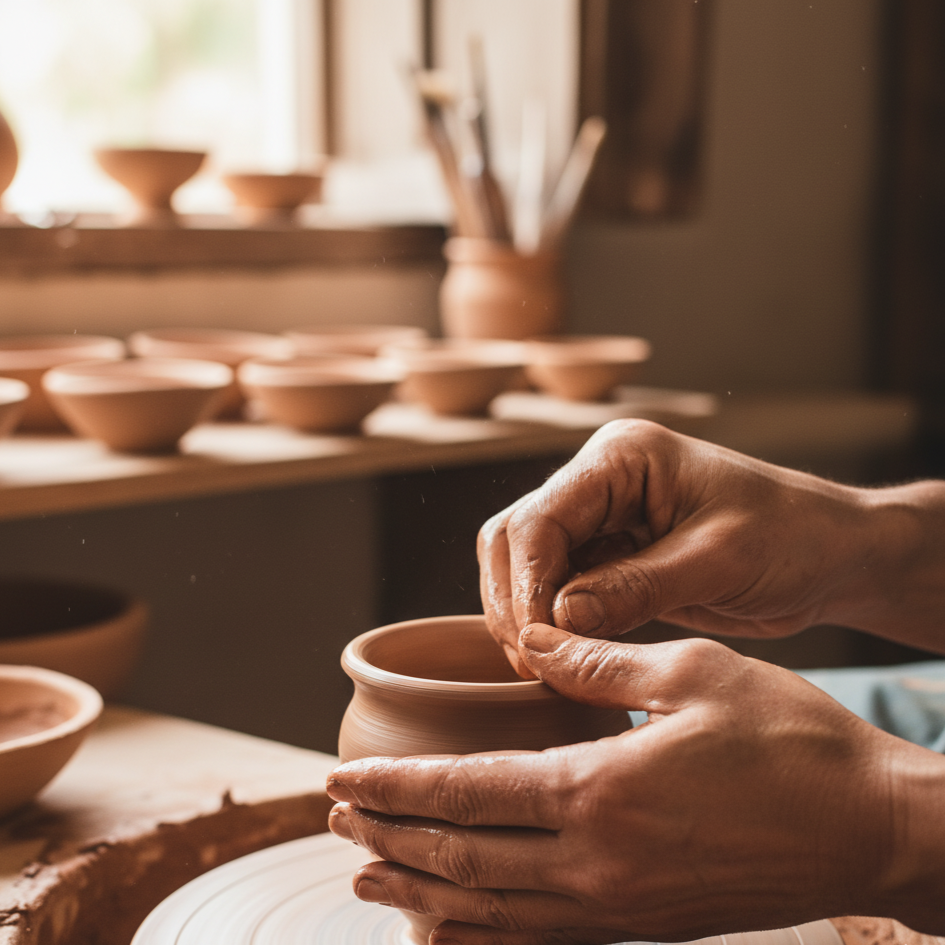A Handmade Clay Copita with a Oaxacan Maestro
In the sun-drenched valleys of Oaxaca, where the air hums with the spirit of agave and ancient traditions thrive, the act of sipping mezcal is a ritual. And for every ritual, the vessel matters. Far from a mere container, the copita is an extension of the mezcal experience itself, carefully designed to enhance the spirit's complex aromas and flavors. To truly understand its significance, one must meet the artisans whose hands bring these vessels to life.
Meet Maestro Armando Ruiz, a third-generation potter from San Bartolo Coyotepec, a village renowned for its black pottery (barro negro). His hands, calloused and wise, have shaped countless copitas from the rich Oaxacan clay since he was a boy learning at his grandfather's side. "For us," Armando explains, as he deftly molds a wet lump of clay on his foot-powered wheel, "the copita is not just a cup. It is part of the mezcal, part of our heritage."
Armando's process is a testament to patience and precision. He begins with local clay, carefully purified and kneaded until it reaches the perfect consistency. On his ancestral wheel, each copita takes shape with an intuitive grace, a gentle widening at the mouth, a shallow basin, and a sturdy base. "The form is essential," he emphasizes. "The wide mouth allows the mezcal to breathe, to open up its aromas. The shallow depth means you sip, you don't gulp. You savor." After shaping, the pieces are left to dry in the Oaxacan sun, then meticulously burnished with quartz stones to achieve a smooth, almost metallic sheen before being fired in an underground kiln, a technique that gives barro negro its distinctive matte black finish without glaze.
Across the region, other artisans, like those working with hand-blown glass, imbue their copitas with a different kind of magic. In villages like Santa Maria del Tule, skilled glassblowers transform molten silica into delicate, translucent vessels, each one unique with subtle imperfections that tell a story of heat, breath, and artistic vision. These glass copitas offer a different sensory experience, allowing the mezcal's color to shine and providing a crisp, clean feel to the lip.
Regardless of material, the essence of the copita lies in its purpose: to facilitate a mindful appreciation of mezcal. It’s a vessel designed for contemplation, encouraging small, deliberate sips that invite the drinker to explore the spirit's nuances—the terroir, the roasted agave, the subtle smokiness. For Armando and his fellow artisans, crafting a copita is a continuation of their ancestors' work, a way to honor the agave, the earth, and the sacred ritual of mezcal itself. Each handmade copita carries not just mezcal, but the spirit of Oaxaca, a tangible connection to a profound cultural legacy.

